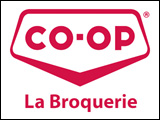The Canola Council of Canada (CCC) announced a new 10-year plan to capitalize on the world’s growing appetite for healthier oils and protein.
Terry Youzwa, Chairman of the CCC Board of Directors, said the plan is aimed at increasing the profitability of canola for everyone in the industry value chain, from Canada’s 43,000 canola growers to the hundreds of thousands of Canadians who derive jobs and wages from related industries.
“Every additional bushel of canola represents an opportunity to make our agricultural sector stronger,” said Youzwa, a Saskatchewan farmer. “We’ve grown from a niche crop to an industry leader generating $19.3 billion in economic activity every year, and we know we can do even more.”
Called Keep it Coming 2025, the plan focuses on generating more profit for the farmer from every acre grown, while building canola’s value in key markets. The 2025 target is an increase to an average 52 bushels per acre, for 26 million metric tonnes of production to meet global market demand for canola.
“These are bold targets, no doubt about it,” Youzwa said. “But we believe that it can be done, and it can be done responsibly and sustainably.”
Independent analysis commissioned by the CCC predicts that global vegetable oil demand will grow by 150 million tonnes in 2015 to 250 million tonnes by 2025, and demand for healthier oils like canola could rise even faster. As the Food and Agriculture Organization of the United Nations has pointed out, there is also a growing demand for protein in animal diets, which signals promising market potential for canola meal.
“World markets are telling us they want the products we can provide. They’re telling us to keep it coming,” Youzwa said. “If we don’t rise to the occasion, our competitors will.”
To reach the strategic target, the industry has established three priorities:
Priority 1: Sustainable, Reliable Supply
Sustainably and profitably increase annual canola production in Canada to meet global demand for 26 million tonnes of Canadian canola by increasing yield to an average of 52 bushels per acre. Improve quality characteristics of seed, oil and meal to meet new and existing customer requirements.
Youzwa said that the plan aims to increase production through increased yield on every acre of canola, rather than a significant increase in acres.
“As a canola grower myself, I am convinced we can achieve the target of 52 bushels per acre,” he said. “The genetic potential is there, and we intend to harness the full capacity of industry agronomists, advisors and scientists to make the most of it. We will target growers with the right research at the right time, and we will respond to each producer’s unique circumstances in order to maximize production from every single seed of planted canola.”
Canola’s track record of sustainability is another positive factor, he said. Canola was one of the first commodities to pass sustainability standards in major markets like the U.S. and Europe. “We have a very sound base on which to grow.”
CCC board member Neil Arbuckle of Monsanto added that canola growers themselves have demonstrated their capacity to move forward. “They are early adopters of the latest agronomy, and have shown that they are very willing to partner with the rest of the value chain. Their willingness to innovate gives us confidence,” he said.
Priority 2: Differentiated Value in the Marketplace
Meet global demand of 26 million tonnes by differentiating and demonstrating the quality characteristics of seed, oil and meal to meet new and existing customer requirements at a competitive price.
CCC board member Neil Sabourin of Cargill said the industry’s marketing efforts will build on past approaches, but with some important refinements.
“As we differentiate canola in the international marketplace, we will take a more targeted approach based on solid analysis,” he said. “We will have better knowledge of exactly what we need to do in various markets to meet specific customer needs.”
Priority 3: Stable And Open Trade
Creating a competitive, stable and open trade environment that consistently allows the industry to attain the maximum value for canola and its products free of tariff and non-tariff trade barriers.
The plan’s third strategic priority addresses the ongoing challenge of market access. Pat Van Osch of Richardson International, another CCC board member, said trade issues require continuous vigilance but can be overcome.
“The trend we see in the global trade environment suggests that we have more opportunity than ever to move in the direction of freer trade,” said Van Osch. “We believe fundamentally that our product competes well on a level playing field, so a level playing field is our goal.”
CCC President Patti Miller said cooperation by the full value chain will be the key to moving forward in a thoughtful, responsible way.
“Our new plan is the clarion call as growers, processors, seed developers and exporters all work together in pursuit of mutually beneficial goals,” she said. “It also sends an important message to the services and supports that are so vital to our industry. We’re saying, we have a great opportunity before us, and we are growing to meet it. Let’s get ready!”



